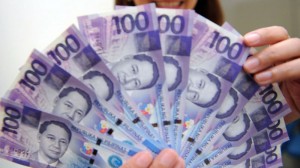MANILA, Philippines—The Bangko Sentral ng Pilipinas (BSP) has leeway to keep its key interest rates steady for now but the monetary authority might be prompted to raise interest rates by 50 basis points later this year to cope with the US Federal Reserve’s tightening stance, economists from Bank of the Philippine Islands said.
The BSP’s policy-making Monetary Board is holding its first 2015 monetary policy-setting meeting today.
In a research note, BPI economists Emilio Neri Jr. and Nicholas Mapa said that with supply-side bottlenecks—particularly in rice—now addressed, food inflation could remain subdued, assuming that weather disturbances would spare the Philippines.
At the same time, they said the sustained levels of crude oil prices below $50 a barrel might seep into other commodities in the consumer price index (CPI) basket as well, raising expectations that the BSP would keep rates neutral throughout 2015.
“However, we still expect BSP to hike by 50 basis points in our 2015 central scenario, to be triggered by the alignment of Philippine policy with the (US) Fed as the BSP Governor (Amando Tetangco Jr.) flags the need to monitor the interest rate differentials and its potential implications on contagion and exchange market pressure,” the research note said.
BPI is still expecting the Federal Open Market Committee to raise rates by 50 basis points this year.
At the same time, the BPI research noted the base effects of low oil prices being washed out by late 2015. “Moreover, threats to the descending inflation path are possible given second-round effects in inflation trends, with adjustments in utilities and wages currently on deck,” the research said.
The economists see a slim possibility of the BSP cutting its policy rates this year, citing strong domestic demand as indicated by the above-consensus GDP (gross domestic product) growth. They added that the BSP was now less compelled to use monetary policy as a growth catalyst.
In the fourth quarter of 2014, Philippine GDP grew by 6.9 percent, beating consensus estimates of 6 percent. This brought full-year GDP growth to 6.1 percent, slowing from 7.2 percent in 2013.
The BSP would be compelled to cut rates only if headline inflation persistently stay below the lower end of its target range of 2 percent, the research noted.
“We think the most the BSP will deliver is a neutral stance. We would have considered the possibility of rate cuts if the BSP had retained its 3-5 percent inflation target instead of lowering it to 2-4 percent,” it said.
